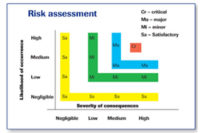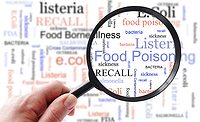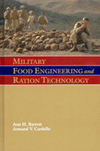Food Safety
Antimicrobials are more than just ingredients
Minimize potential contamination with antimicrobial materials incorporated in floors, walls, overheads, ceilings, drains, doors, clothing and non-food contact surfaces.

When most people in the food industry hear the word “antimicrobial,” they usually think about preservatives such as sodium benzoate or calcium propionate. But antimicrobials are more than just preservatives. Today’s technology allows a wide range of products to be formulated with antimicrobial components for use in food processing equipment, floors, walls, doors, and refrigeration and ventilation systems. The key to these products is silver.
Ancient people such as the Phoenicians understood that placing water in silver bowls or chalices helped to keep them safe from contaminated water. In fact, silver is not the only metal with this property. Copper sheathing was placed on the bottom of ancient hulls to prevent shipworms from attacking them and to discourage the growth of weeds.
Silver ions are a very effective antimicrobial; they are lethal to microorganisms. Some believe the silver ions bind to thiol groups in enzymes, deactivating the enzymes; others think the silver ions enter cells and denature the DNA of microorganisms. Whatever the mechanism is, it is effective.
Silver ions can be incorporated into the steel used in food processing facilities. For instance, AK Steel of West Chester, OH produces a product called AgION steel, a polymer containing silver ions applied to carbon steel. Over time, the ions are released, inhibiting the growth of bacteria, yeast and molds. How long the steel remains effective depends on the thickness of the coating and the application in which it used.
One of the main applications has been in air conditioning and ventilation systems, and the target markets have been hospitals and schools. But AgION steel has real potential in the food industry, especially in clean room applications. It could also be used in refrigeration systems such as condensate collectors and refrigerator walls. Since Listeria monocytogenes have been known to colonize in refrigerators, offering these components in antimicrobial steel could help minimize their growth in food plants.
Silver ions are currently being used in these types of equipment, and FDA has approved its use for food contact applications through the Food Contact Substances Notification (FCN) premarket approval process. These approvals are company specific and not listed in the CFR. The following link lists FCN approvals for silver: http://www.accessdata.fda.gov/scripts/fdcc/?set=FCN&sort=FCN_No&order=DESC&startrow=1&type=basic&search=silver.
However, not all silver additives have FDA food contact approval. Some food contact additives, such as Microban SilverShield technology, can be used in food contact within the limits specified on its EPA labels. And, the use of silver ion technology is actually under the jurisdiction of two government agencies.
Applying this technology in post-processing handling equipment for ready-to-eat (RTE) foods, including belts, conveyors, packaging equipment and transfer points, could minimize the potential for post-process contamination. The only downside might be the cleaning crew paying less attention to cleaning these surfaces since they have antimicrobial properties.
Using an antimicrobial surface also could help minimize potential microbial problems in other food plant areas: floors, walls, overheads, ceilings, drains, doors, clothing and non-food contact surfaces, especially those areas deemed Zone 2 in an environmental sampling program (see box on page 25).
Antimicrobial silver also can be incorporated into epoxy resins, grout and cements for floors. Of course, before installing any of these, processors must consider the products they produce and the cleaning chemicals the floor will be exposed to.
Plus, processors have the option of installing easily cleanable walls that incorporate antimicrobial components. Drains, one of the favorite hiding places for Listeria monocytogenes, could also benefit from the use of antimicrobials.
Some companies manufacture clothing with incorporated antimicrobial silver. Items such as socks, shoes, protective gear, gloves and lab coats are already on the market. These items can withstand multiple washings and still retain their antimicrobial properties.
In addition, the potential for microbial contamination in high-risk areas can be minimized by incorporating antimicrobials in surfaces touched frequently by workers, especially the press plates on rest room doors.
Is incorporating antimicrobials into your plant environment and equipment the right thing to do? Since environmental monitoring will be an important element in the final regulations that are being enacted to ensure compliance with the Food Safety Modernization Act of 2010, this is a question each food manufacturing company should consider very seriously.
If antimicrobial materials can minimize potential contamination in your plant, especially in Zones 2 and 3, the food safety or HACCP team should evaluate this option. Using antimicrobials will mean additional costs, but these costs could minimize potential problems and help you sleep better at night.
References:
- A Cleaner Future with AgION Antimicrobial Compounds, Carrier Corporation, 2003, http://dms.hvacpartners.com/docs/1001/Public/06/811-10180.pdf.
- Dr. Bernadene Magnuson, Personal Communication, 2015.
- Consumer Products Treated with Pesticides (updated May 2015), EPA, http://www.epa.gov/pesticides/factsheets/treatart.htm.
Looking for a reprint of this article?
From high-res PDFs to custom plaques, order your copy today!









